Made in Singapore: Endangered crab species found only in Nee Soon Swamp Forest successfully bred in captivity
Found only in Nee Soon Swamp Forest, these crabs may soon make their way to other locations on the island due to NParks' breed-and-release efforts.
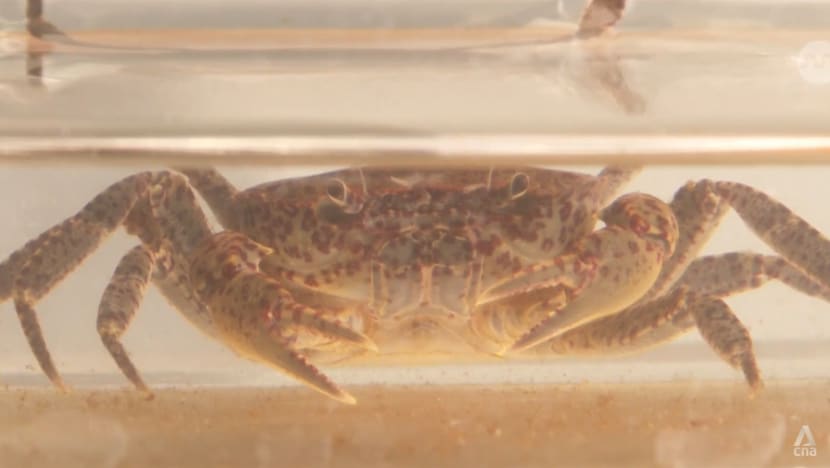
The critically endangered Singapore swamp forest crab. Nocturnal and elusive, it usually hides by burrowing into the sides of the muddy banks of Nee Soon Swamp Forest – the only place the species is found in Singapore.
SINGAPORE: A little spotted swamp forest crab species, found only in Singapore, has been successfully hatched in captivity and released back into the wild.
The National Parks Board (NParks) bred the critically endangered species in its lab in a push to boost the crustaceans’ population and establish more colonies in nature sites around the island.
Researchers leading the initiative said saving the reticulated swamp forest crab, known by the scientific name Parathelphusa reticulata, can play a part in combating climate change.
The project is part of efforts to protect rare plants and animals native to Singapore.
ELUSIVE CRITTERS
The tiny freshwater crabs, which grow up to just 4cm as adults, are difficult to spot, study and capture.
The critters are nocturnal and elusive, and hide by burrowing into the sides of the muddy banks of Nee Soon Swamp Forest.
Located southeast of Seletar Reservoir in the Central Catchment Nature Reserve, the area is Singapore’s last remaining freshwater swamp forest.
“We know very little about this species in the wild as we are unable to make much observations. We harvested a few from the swamp, which was quite difficult because they are hard to find,” said lead researcher Daniel Ng.
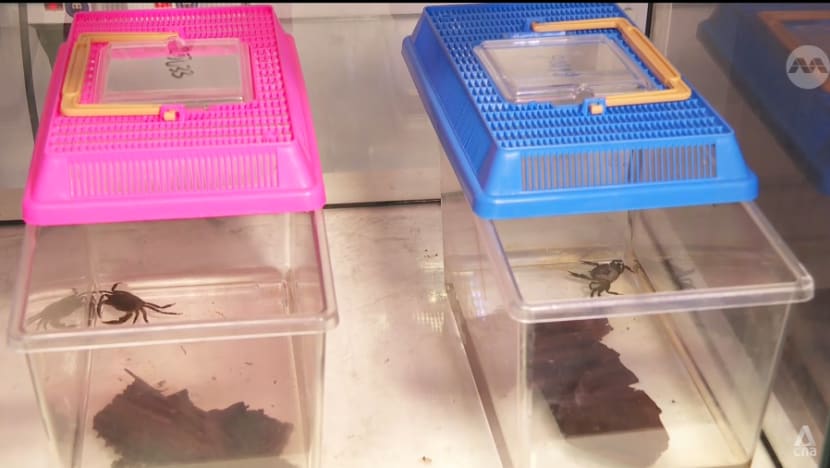
Scientists collected 12 adult specimens in 2018 and brought them to NParks' conservation facility. There, they closely observed the species to better understand the optimal environment in which they thrive and breed.
Researchers initially brought natural stream water from the swamp for the crustaceans as they survive better in water that is softer and slightly acidic.
However, they later discovered the crabs could adapt well to treated tap water.
The results were a breakthrough as this meant the species could potentially survive in other nature parks outside of Nee Soon Swamp Forest.
“Our research suggested that this species is tolerant to water conditions. Hence, we believe that this species can be introduced to potentially more sites within Singapore’s nature reserves,” said Mr Ng, who is also the manager of NParks’ National Biodiversity Centre.
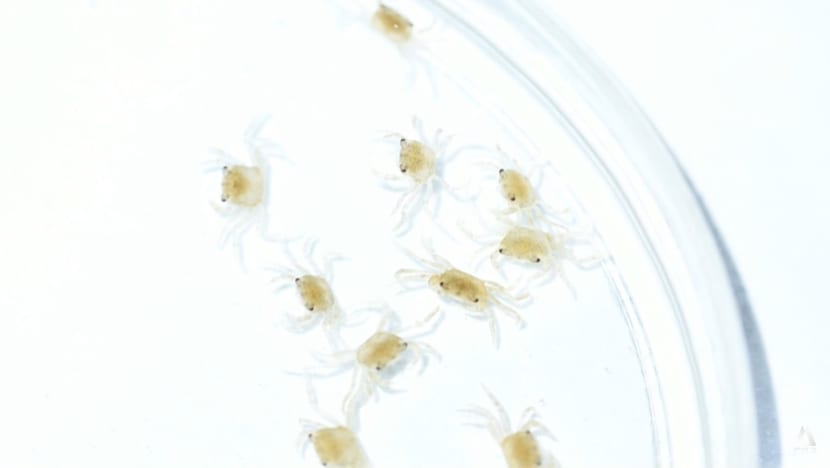
RETURN TO NATURE
Since 2019, researchers have bred two generations of the species.
They said it is the first successful attempt in the world to produce swamp forest crabs in an artificial environment.
Some baby crabs were returned to Nee Soon Swamp Forest while 20 others were released at their new home at an undisclosed nature park last week.
NParks has not revealed the location to prevent the public from hunting for them and threatening their survival.
Prior to the release of the crabs, NParks staff tested the adaptability of the crabs with water collected from the new spot.
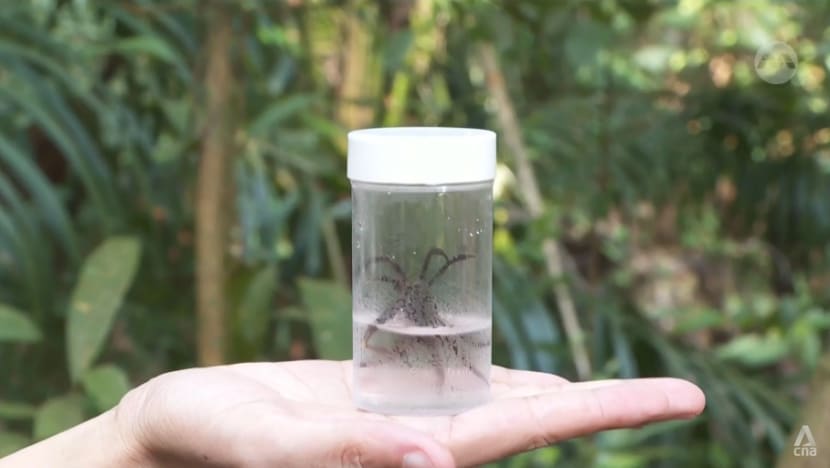
Site research was also conducted to ensure that the chosen location has fewer natural predators such as big fishes that may feed on the crabs.
Researchers hope that by introducing them to different areas in Singapore, the species could build new colonies elsewhere.
“These crabs are only found in Nee Soon Swamp Forest. If something happens to the site, the crabs will be wiped out. This is one of the reasons why this species is critically endangered,” explained Mr Ng.
Over the next six months, researchers will regularly conduct night surveys and measure the size of the crabs to determine if they are doing well in their new environment.
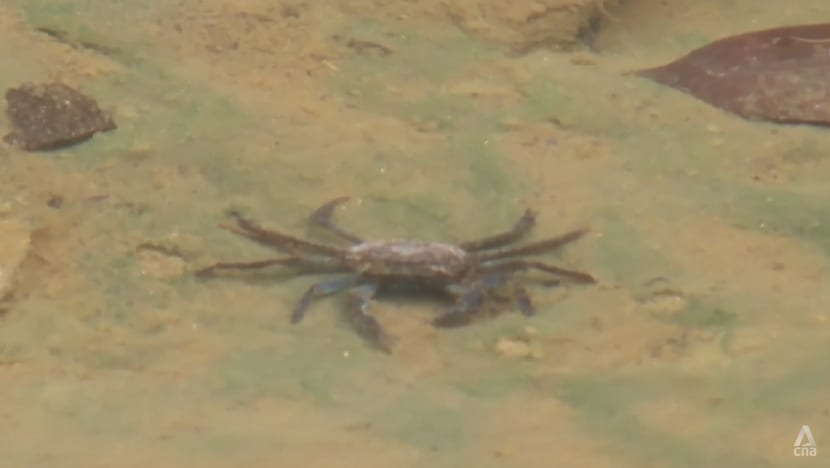
“If they are growing in this environment, it means that this habitat is potentially suitable for them,” Mr Ng said. “Then we will plan to translocate more crabs into this habitat with the hope that eventually we can establish a population here.”
PROTECTING SINGAPORE’S WILDLIFE
This species of freshwater crabs feed mostly on leaf litter, helping to break them down for other wildlife to consume.
“Animals play an important part in the ecosystem because they, for example, function as pollinators or (in the case of these crabs) break down leaf litter and help with the nutrient recycling process,” said Mr Ryan Lee, group director of the NParks’ National Biodiversity Centre.
“All in all, it will result in a positive ecosystem service that will provide cleaner air, cooler temperatures and make Singapore more livable.”
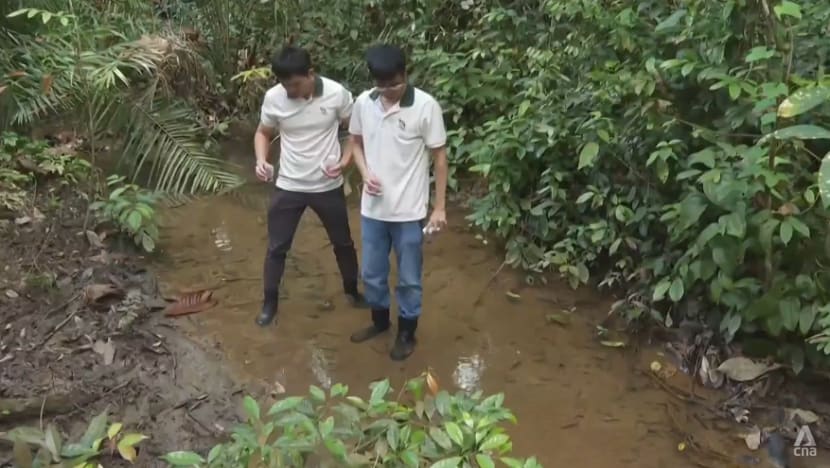
Such efforts to protect wildlife is part of NParks’ species recovery programme, aimed at safeguarding endemic or threatened native flora and fauna in the country.
It is part of a larger plan to conserve the country's biodiversity, which in turn helps combat global warming.
Currently, more than 120 plant and animal species are under the recovery initiative. NParks is looking to grow this number to 160 by 2030.
“Going forward, we will review the conservation status of native biodiversity in Singapore, and target threatened species that require specific recovery efforts so as to safeguard their resilience in the face of urbanisation and climate change,” said Mr Lee.


















